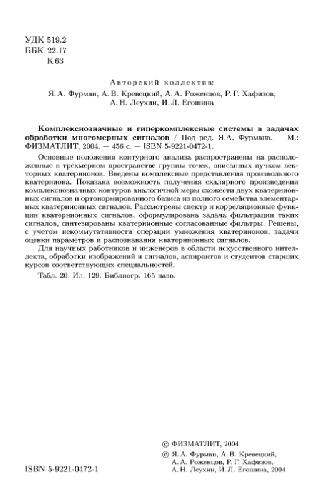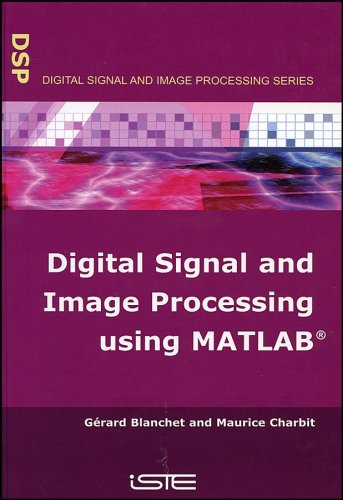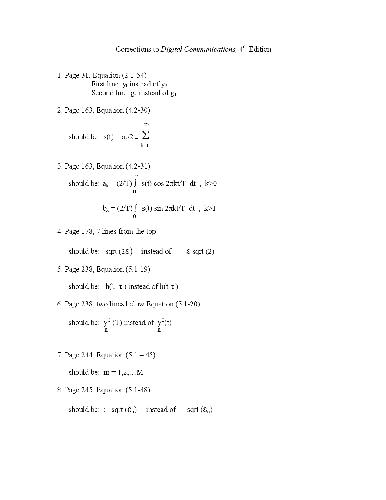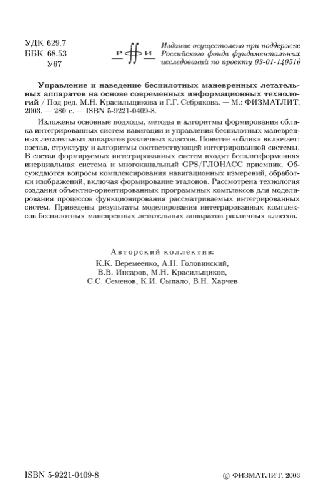Rajeev Bansal0849373603, 9780849373602
Table of contents :
7360fm.pdf……Page 1
Fundamentals of Engineering Electromagnetics……Page 2
Scope……Page 5
Acknowledgments……Page 7
Editor……Page 8
Contributors……Page 9
Contents……Page 10
Appendix B: Some Units and Conversions……Page 0
1.1.1. Lorentz Force Equation……Page 11
1.1.2. Material Parameters and Constitutive Relations……Page 13
Ampere’s Circuital Law……Page 17
Gauss’ Law for the Electric Field……Page 18
Law of Conservation of Charge……Page 19
1.2.2 Maxwell’s Equations in Differential Form and the Continuity Equation……Page 22
1.2.3. Boundary Conditions……Page 25
1.2.4. Electromagnetic Potentials and Potential Function Equations……Page 27
1.2.5. Power Flow and Energy Storage……Page 28
1.3.1. Classification of Fields……Page 30
Electrostatic Fields and Capacitance……Page 31
Magnetostatic Fields and Inductance……Page 35
Electromagnetostatic Fields and Conductance……Page 37
Electroquasistatic Fields……Page 41
Magnetoquasistatic Fields……Page 43
Quasistatic Fields in a Conductor……Page 44
Wave Equation and Solutions……Page 47
Distributed Circuit Concept……Page 54
1.3.5. Hertzian Dipole Fields via the Thread of Statics-Quasistatics-Waves……Page 57
REFERENCES……Page 62
2.1. INTRODUCTION……Page 63
2.2. THE ELECTROQUASISTATIC REGIME……Page 64
2.3. DISCRETE AND DISTRIBUTED CAPACITANCE……Page 66
2.5. THE ORIGINS OF ELECTROSTATIC CHARGE……Page 67
2.7. INDUCTION CHARGING……Page 70
2.8. DIELECTRIC BREAKDOWN……Page 71
2.9. CORONA DISCHARGE……Page 73
2.10. CHARGES AND FORCE……Page 74
2.11. PARTICLE CHARGING IN AIR……Page 76
2.13. ELECTROSTATIC COATING……Page 79
2.14. ELECTROSTATIC PAINT SPRAYING……Page 80
2.15. ELECTROPHOTOGRAPHY……Page 81
2.16. ELECTROSTATIC PRECIPITATION……Page 82
2.17. FIELD AND CHARGE MEASUREMENT……Page 85
2.18. ELECTROSTATIC FIELD MILL……Page 86
2.19. NONCONTACTING VOLTMETER……Page 87
2.20. MICROMACHINES……Page 90
2.22. ELECTROSTATIC DISCHARGE AND CHARGE NEUTRALIZATION……Page 93
REFERENCES……Page 95
3.1. INTRODUCTION……Page 98
3.2.2. The Biot-Savart Law……Page 99
3.2.3. Units: How Large is a Tesla?……Page 100
3.2.6. Magnetic Flux……Page 101
3.2.7. Ampere’s Law in Vacuum……Page 102
3.2.8. Magnetic Field in Materials……Page 103
3.2.9. Generalized Ampere’s Law and Magnetic Field Intensity……Page 104
3.2.10. Macroscopic Currents Equivalent to a Magnetized Material……Page 105
3.2.11. Boundary Conditions……Page 106
3.2.12. Basic Properties of Magnetic Materials……Page 107
3.2.13. Magnetic Circuits……Page 110
3.3.1. Basic Properties of Magnetic Force on a Charged Particle (the Lorentz Force)……Page 112
Charged Particle Moving in a Uniform Magnetic Field……Page 113
The Hall Effect……Page 114
Helmholtz Coils……Page 116
Magnetic Force in a Loudspeaker……Page 118
Magnetic Field of a Straight Wire……Page 119
Magnetic Field of a Toroidal Coil……Page 121
Magnetic Field of a Stripline……Page 122
3.3.5. Measurements of Basic Properties of Magnetic Materials……Page 123
3.3.6. Magnetic Storage……Page 124
3.3.7. Magnetic Circuits……Page 127
3.3.8. Nuclear Magnetic Resonance (NMR) and Magnetic Resonance Imaging (MRI)……Page 129
REFERENCES AND FURTHER READING……Page 131
4.1. INTRODUCTION……Page 132
4.2.1. The Induced Electric Field……Page 133
4.2.2. Faraday’s Law of Electromagnetic Induction……Page 134
4.2.3. Potential Difference and Voltage in a Time-varying Electric and Magnetic Field……Page 135
4.2.4. Self-inductance and Mutual Inductance……Page 136
4.2.5. Energy and Forces in the Magnetic Field……Page 138
4.3.1. Magnetic Coupling……Page 140
4.3.2. Lentz’s Law……Page 141
4.3.4. The Skin Effect and the Proximity and Edge Effects……Page 142
4.3.5. Limitations of Circuit Theory……Page 145
4.3.6. Superconducting Loops……Page 146
4.4.1. An AC Generator……Page 147
4.4.2. Induction Motors……Page 148
4.4.4. Measurement of AC Currents……Page 149
4.4.5. Problems in Measurement of AC Voltage……Page 150
4.4.6. Readout of Information Stored on a Magnetic Disk……Page 151
4.4.7. Transformers……Page 152
Mutual Inductance Between a Toroidal Coil and a Wire Loop Encircling the Toroid……Page 154
Mutual Inductance of Two Crossed Two-wire Lines……Page 155
Self-inductance of a Thin Solenoid……Page 156
Self-inductance of a Coaxial Cable……Page 159
External Self-inductance of a Thin Two-wire Line……Page 160
Self-inductance and Mutual Inductance of Two Windings over a Toroidal Core……Page 161
Flat Multiconductor Cable……Page 162
Neumann’s Formula for External Self-inductance of a Wire Loop……Page 163
4.6.2. Losses in Ferromagnetic Materials Due to Hysteresis and Eddy Currents……Page 164
Ferrite Anechoic Chambers for EMC/EMI Testing……Page 165
4.6.5. Force of an Electromagnet……Page 166
4.6.6. Comparison of Electric and Magnetic Pressure……Page 167
4.7.1. Mutual Inductance Between Monophase Cables Laid on the Bottom of the Sea……Page 168
4.7.3. Rough Calculation of Induced Voltages in a Human Body Due to Currents in Power Lines……Page 169
REFERENCES……Page 170
5.1. WAVE EQUATIONS AND CHARACTERISTICS……Page 172
5.1.2. Dispersion……Page 174
5.1.4. Group Velocity……Page 175
5.1.5. Polarization……Page 177
5.1.6. Poynting’s Theorem……Page 178
5.1.7. Boundary Conditions……Page 180
5.1.8. Wave Reflection……Page 181
5.2. FREE-SPACE PROPAGATION MODEL……Page 183
5.3. PATH LOSS MODEL……Page 184
5.4. EMPIRICAL PATH LOSS FORMULA……Page 190
REFERENCES……Page 191
6.1. INTRODUCTION……Page 193
6.2.1. Transmission-line Parameters……Page 195
6.2.2. Transmission-line Equations for Lossless Lines……Page 196
6.2.3. General Traveling-wave Solutions for Lossless Lines……Page 197
6.3. TRANSIENT RESPONSE OF LOSSLESS TRANSMISSION LINES……Page 200
6.3.1. Reflection Coefficient……Page 201
6.3.2. Step Response……Page 202
6.3.3. Lattice Diagram……Page 204
6.3.4. Applications……Page 205
Transmission-line Junctions……Page 206
Reactive Terminations……Page 208
Nonlinear Terminations……Page 209
Time-Domain Reflectometry……Page 210
6.4.1. Characteristics of Lossy Transmission Lines……Page 212
Impedance Transformation……Page 215
Transmission Lines as Reactive Circuit Elements……Page 218
Standing Waves……Page 220
6.4.3. The Smith Chart……Page 224
6.4.4. Impedance Matching……Page 227
Quarter-wave Transformer……Page 228
Stub Matching……Page 229
6.5. FURTHER TOPICS OF TECHNOLOGICAL IMPORTANCE AND FUTURE DIRECTIONS……Page 231
6.5.3. Chip- and Package-level Interconnects……Page 232
REFERENCES……Page 233
7.2. MODE CLASSIFICATIONS……Page 235
7.3. MODAL FIELDS AND CUTOFF FREQUENCIES……Page 237
7.4. PROPERTIES OF METAL WAVEGUIDES……Page 238
7.4.2. Wave Impedance……Page 239
7.4.3. Wave Velocities……Page 240
7.4.5. Effects of Losses……Page 241
7.5. RECTANGULAR WAVEGUIDES……Page 243
7.6. CIRCULAR WAVEGUIDES……Page 246
7.7. COAXIAL-TO-WAVEGUIDE TRANSITIONS……Page 249
7.8. COMPARATIVE SURVEY OF METAL WAVEGUIDES……Page 251
7.9.1. Cylindrical Cavity Resonators……Page 253
7.9.2. Dielectric Resonators……Page 257
FURTHER INFORMATION……Page 260
8.1. INTRODUCTION TO RADIATION……Page 262
8.2. ANTENNA TERMINOLOGY……Page 263
8.3. SIMPLE ANTENNA STRUCTURES……Page 266
8.4. ANTENNA ARRAYS AND PATTERN SYNTHESIS……Page 275
8.5. SMART ANTENNAS……Page 277
8.6. ANTENNA MEASUREMENTS……Page 280
REFERENCES……Page 282
9.1.1. Introduction……Page 283
9.1.2. Basic Principles of Operation……Page 284
9.1.3. Feeding Techniques……Page 285
9.1.5. Radiation Patterns……Page 287
9.1.6. Radiation Efficiency……Page 289
9.1.7. Bandwidth……Page 292
9.1.8. Input Impedance……Page 293
9.1.9. Improving Performance……Page 294
9.2.2. Helical Antenna……Page 297
9.2.3. Frequency Independent Antennas……Page 300
9.2.4. Spiral Antennas……Page 301
9.2.5. Log-periodic Antennas……Page 305
9.3.1. Introduction……Page 308
9.3.2. Slow-wave Antennas……Page 309
Uniform Structures……Page 313
Periodic Structures……Page 316
Two-dimensional Leaky-wave Antennas……Page 318
9.4.2. Radiation from Apertures……Page 320
9.4.3. Electrically Small Rectangular Slot……Page 323
9.4.4. Rectangular Horn Antenna……Page 324
9.4.5. Reflector Antennas……Page 328
9.5.1. Array Far Fields……Page 330
9.5.2. Array Pattern Characteristics……Page 335
9.5.3. Array Gain……Page 340
9.5.4. Array Elements……Page 343
9.5.5. Phased Array Feed and Beam-forming Systems……Page 344
9.5.6. Electronic Beamsteering……Page 346
9.5.7. Mutual Coupling……Page 349
REFERENCES……Page 350
10.1. SIGNIFICANCE OF EMC TO MODERN ENGINEERING PRACTICE……Page 353
10.2.1. Elements of EM Field Theory……Page 355
10.2.2. Treatment of Signals and Sources……Page 359
10.2.3. Circuit Analysis for EMC……Page 360
10.3.1. Penetration Through Materials……Page 361
10.3.2. Penetration Through Apertures……Page 363
10.3.3. Conducted Penetrations……Page 365
10.3.4. Radiation and Cross Talk……Page 369
10.5. EMC STANDARDS AND TECHNIQUES……Page 376
REFERENCES……Page 379
Appendix A: Some Useful Constants……Page 383
Appendix B: Some Units and Conversions……Page 384
C.3. SCALAR AND VECTOR FIELDS……Page 385
C.4. VECTOR ADDITION AND SUBTRACTION……Page 386
C.5. POSITION AND DISTANCE VECTORS……Page 387
C.6.1. Scalar (Dot) Product……Page 388
C.7. The Cylindrical Coordinate System……Page 389
C.8. THE SPHERICAL COORDINATE SYSTEM……Page 390
Vector Interconversion Strategy……Page 392
C.10.1. Divergence……Page 393
C.10.3. Curl……Page 394








Reviews
There are no reviews yet.